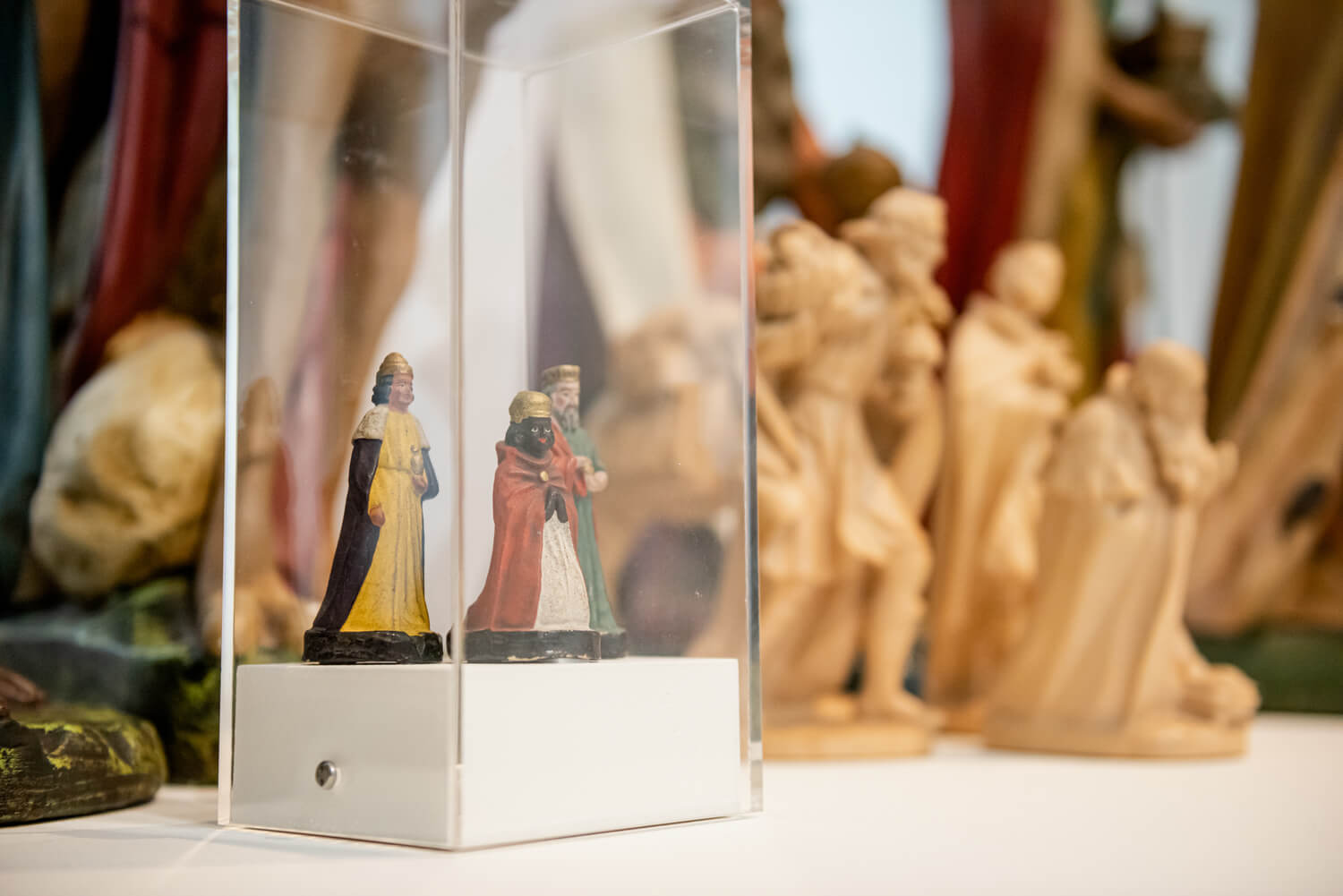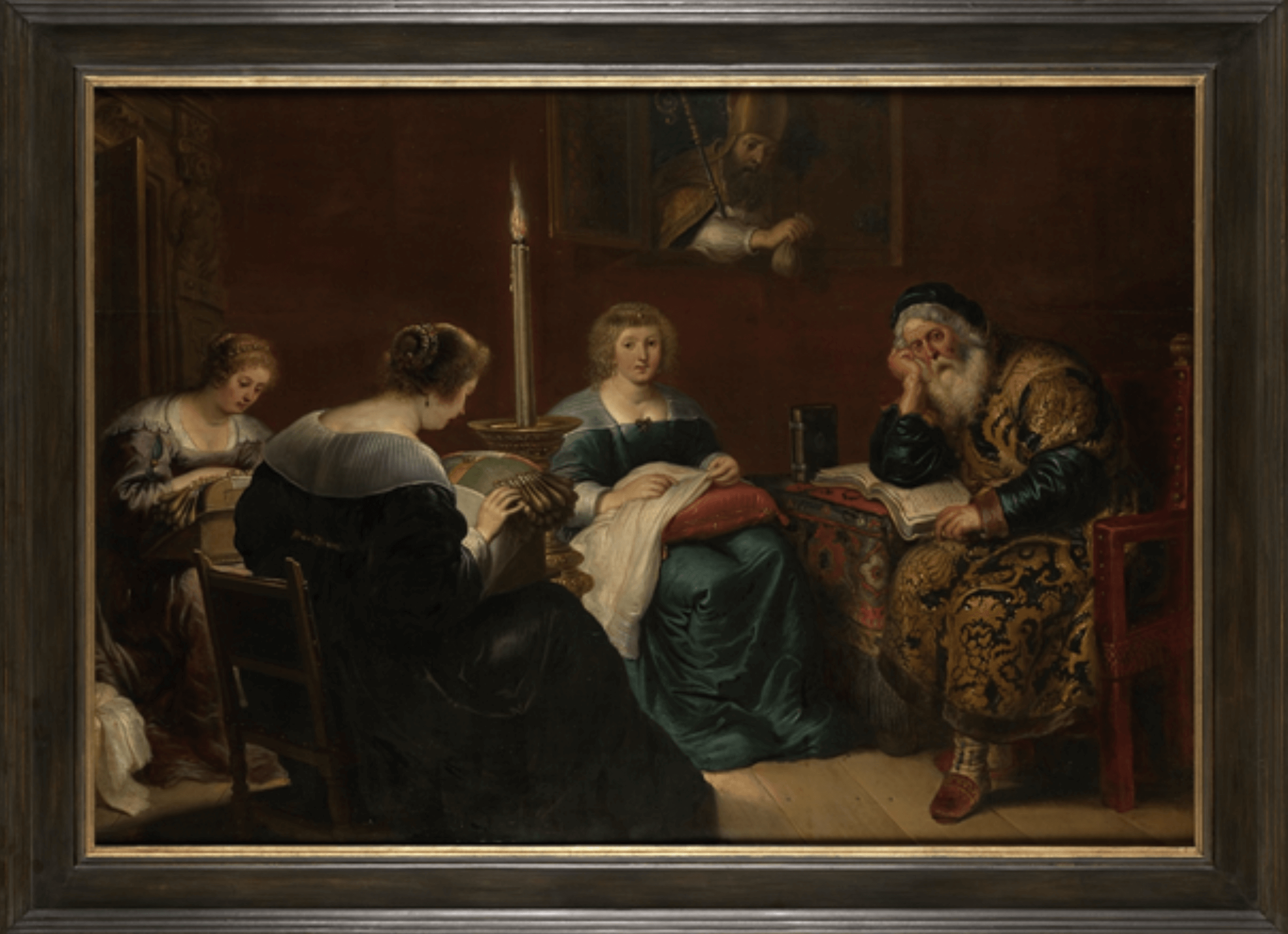
Collection
Discover St. Nicholas
In the nineteenth century, our attic church was known as St. Nicholas Within the Walls. The Catholic community of that time saw the church as the successor to the Old Church which was dedicated to St. Nicholas before the Protestant takeover.
Every Catholic church has a patron saint. St. Nicholas is the patron saint of this church. His annual feast day on the 6th of December is therefore our patronal feast day. In the Catholic church, patronal feast days are celebrated with great pomp and circumstance.
Statue of St. Nicholas
This statue of St. Nicholas is almost life size. It originally stood in another Amsterdam church: De Papegaai, in the Kalverstraat. The saintly bishop rises his right hand in blessing. In his left hand he carries a book with three golden balls. These refer to the story of the three girls and their dowry.
St. Nicholas was the bishop of Myra, a city in Turkey, where he died on the 6th of December 343. All sorts of good deeds, miracles and spectacular rescues have been attributed to him. The veneration of St. Nicholas expanded from East to West, especially after the translation of his bodily remains in the 11th century to the Italian city Bari.
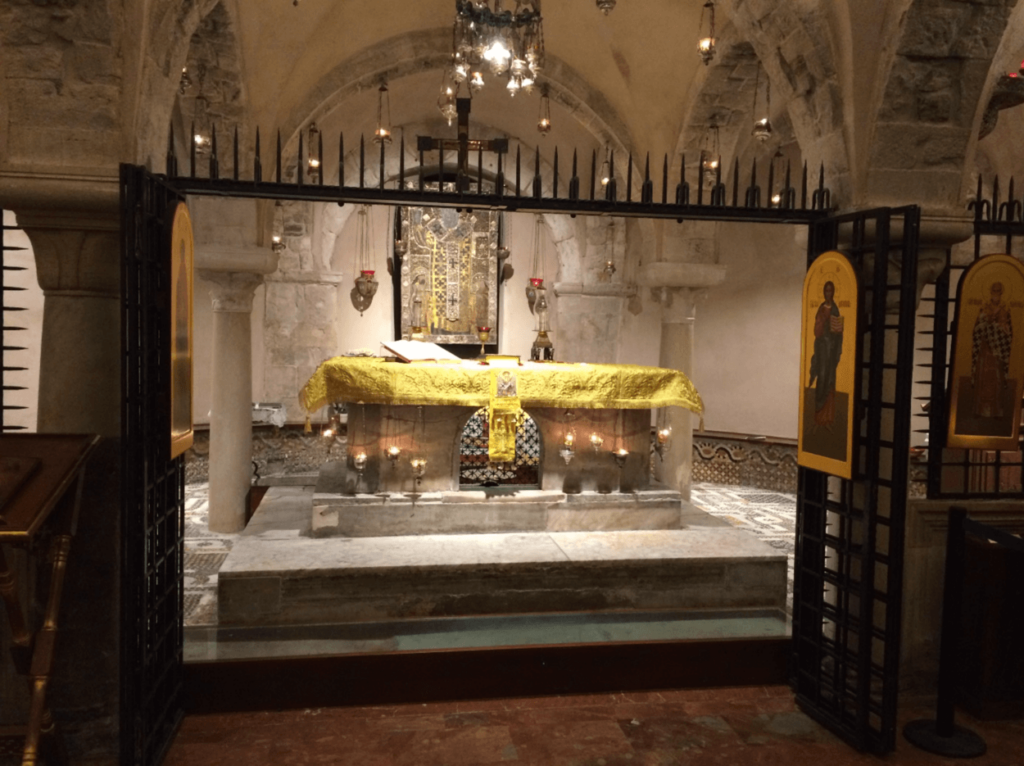
Initially St. Nicholas became popular due to his role as patron saint of merchants, sailors and guilds. In the 14th century Amsterdam made him the patron saint of the city and of the only parish church: the St. Nicholas Church, now called the Old Church.
In the nineteenth century, our attic church was known as St. Nicholas Within the Walls. The Catholic community of that time saw the church as the successor to the Old Church. t the end of the 19th century the community could build a large and visible church. They also named this church after St. Nicholas. On the evening of the 30th of march 1887 the Blessed Sacrament which was kept in this church was transported in an open carriage by the parish priest to the new St. Nicholas Church (now Basilica). There the life of their beloved patron saint was impressively depicted on the walls.
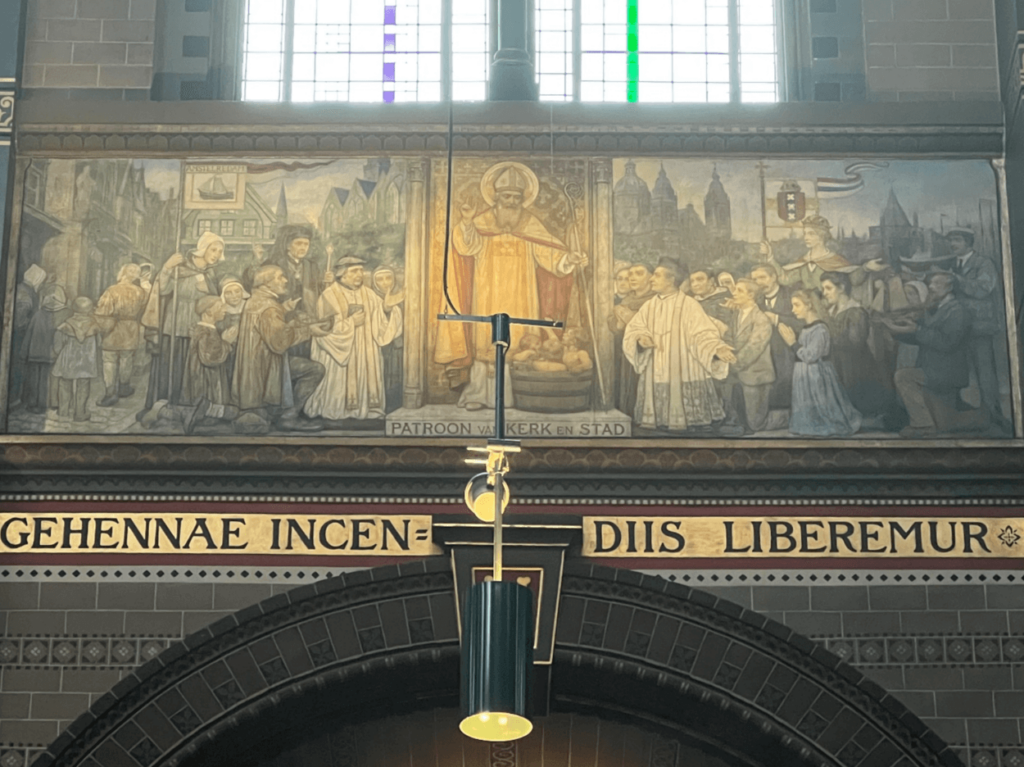
The church at the time of a high feast
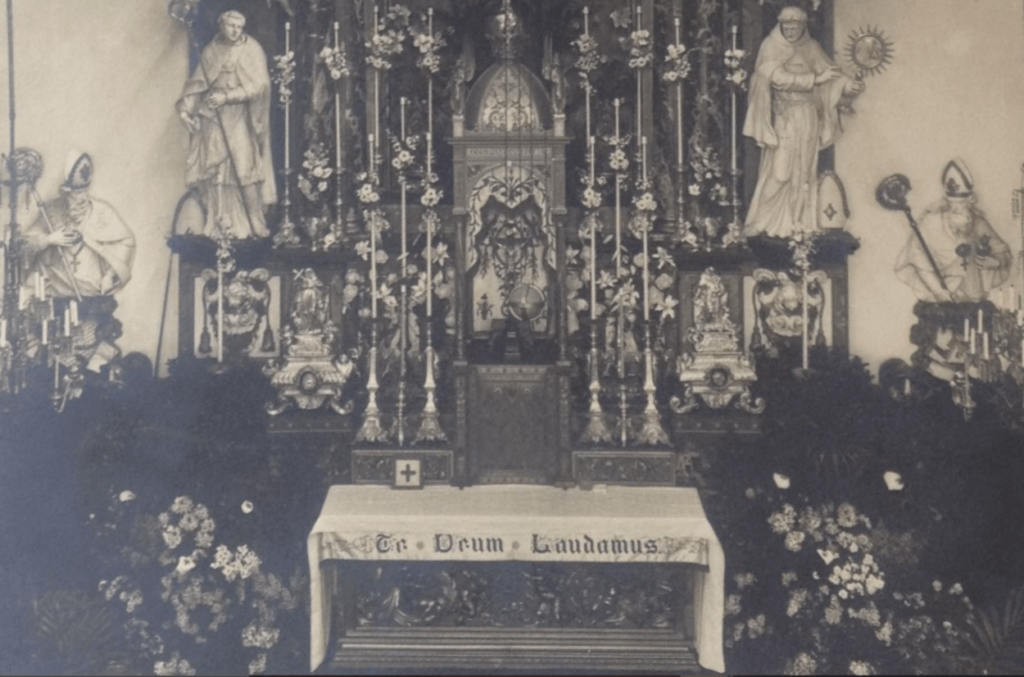
The most beautiful liturgical objects are on display to celebrate the feast of St. Nicholas. These objects make the high altar an extra rich display. Two busts of bishops are placed on the shelves next to the candlesticks. These busts are actually reliquaries. Reliquaries are highly ornamented containers holding the remains of saints. These two reliquaries have their relics removed. This is why it is now impossible to tell which saints these two busts represent.
Other reliquaries, which still hold relics, are also placed at the altar. These reliquaries have the shape of an ostensory. The ostensory has a small glass window which make the relics visible to the faithful in church.

Highly ornate candlesticks are used during the feast. The saintly bishop Willibrord, patron saint of The Netherlands, is depicted on the foot of each candlestick. A missal with a precious silver cover is placed on the right side of the altar. The priest reads the prayers of the Mass from this book. The missal is placed on an equally precious missal stand.
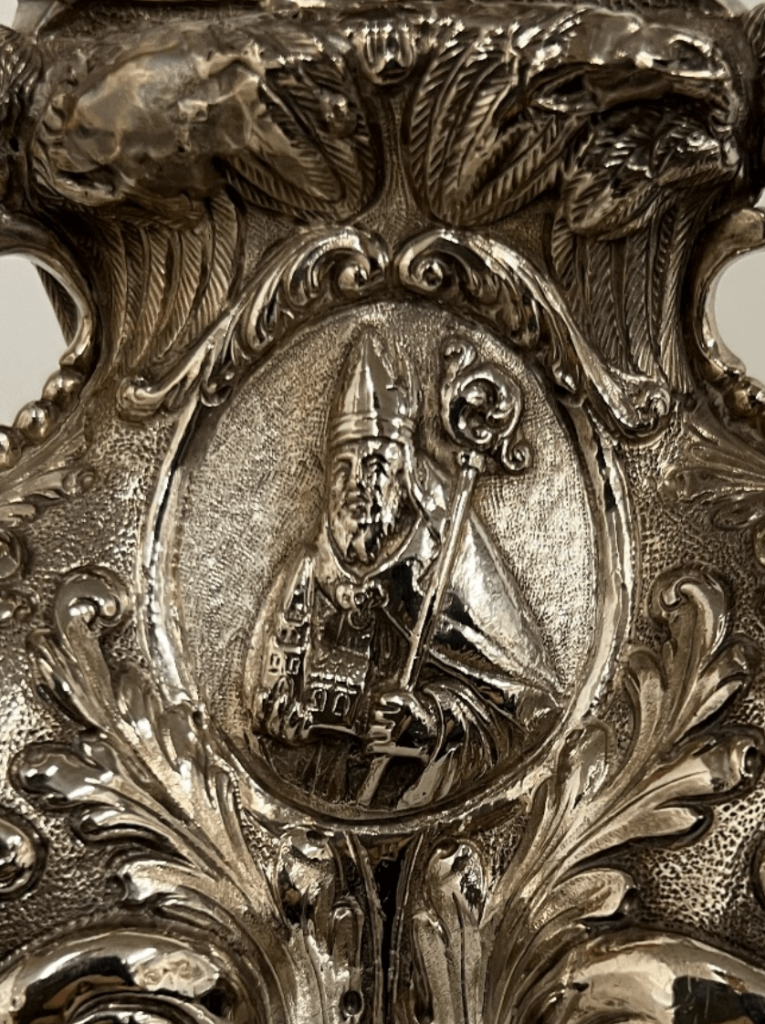
Ornate banners hang from the galleries. These banners were made by fraternities which were connected to the church. This collection of banners comes from various Catholic churches in Amsterdam. Hanging these banners does not only embellish the church, but also points to the active community life of the faithful.
Quick to:

